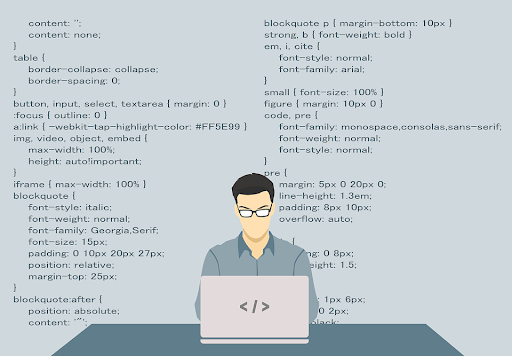Top 7 Fast-Growing Tech Profession Of The Future
The tech industry is an ever-evolving landscape that’s constantly introducing new and exciting opportunities. As technology continues to advance, there are more and more job openings available in the tech sector. But which jobs will be the most in-demand and fastest growing? This article will take a look at seven of the top tech professions of the future—from software engineering to artificial intelligence (AI) developers, these are some of the hottest career paths for those looking for a lucrative job in technology. So if you want to stay ahead of the curve when it comes to your career prospects, read on
Software Engineer
As the need for digital transformation grows, software engineers are becoming more and more in demand. Their role is to develop and maintain software applications for businesses or individuals and to create programs that make computers run faster and smoother, as well as help users navigate their systems with ease. To become a software engineer, you’ll need a degree in computer science, engineering, or a related discipline. Having a strong understanding of coding languages like C++, Java, and Python will be essential to success in this role. Additionally, software engineers must have a good grasp of web development, database management, and security protocols. With the right skill set, this job can not only be quite lucrative but also incredibly rewarding.
Cyber Security Analyst
Cyber security analysts are a growing field, as companies of all sizes must now be more aware of their online presence and data protection. The role of the cyber security analyst is to monitor networks for malicious activity, identify risks and vulnerabilities in system security, and develop strategies to protect against potential threats. In addition to having strong technical knowledge, cyber security analysts must have strong problem-solving skills and be able to think outside the box. A degree in computer science, information systems, or a related field is typically required for this role. On the other hand, if you’re interested in moving up the ladder in cyber security, a postgraduate degree or a certification in information assurance and cyber security could be your ticket to success. You can also opt for cyber security specialization courses to enhance your knowledge and skills. This can be done either online or through a university.
AI Developer
AI developers are among the top tech professions of the future, with demand in this area showing no signs of slowing down. AI developers are responsible for designing, coding, implementing, and maintaining artificial intelligence systems. This role requires a deep understanding of machine learning algorithms, neural networks, natural language processing, computer vision, and other related technologies. AI developers must also be able to think critically and come up with innovative solutions to complex problems. A degree in computer science, software engineering, mathematics, or a related discipline is usually required for this role. You can also opt for certification programs in AI development to boost your knowledge and skills.
Data Scientist
The demand for data scientists is on the rise, as organizations of all sizes look to leverage big data to identify new trends and insights. Data scientists have the technical expertise and are responsible for collecting and analyzing large datasets to generate insights that can inform decisions within an organization. They are experts at combining different sources of data to create comprehensive models that can be used for predictive analytics and to improve business processes. To become a data scientist, you’ll need to have a degree in computer science, mathematics, or a related discipline. Additionally, knowledge of programming languages like R and Python is essential as well as strong problem-solving skills and analytical thinking.
Cloud Solutions Architect
Organizations are increasingly moving their applications, data, and workloads to the cloud, so cloud solutions architects need to specialize in designing secure and efficient cloud architectures that meet the needs of the business. Additionally, cloud solutions architects must also stay up-to-date on the latest technologies and trends in the industry and be able to apply them in their designs. To become a successful cloud solutions architect, you’ll need to have an in-depth understanding of different cloud platforms like Microsoft Azure and Amazon Web Services (AWS). A degree in computer science, software engineering, or a related discipline is recommended as well. You can also opt for certification programs from AWS and Azure to demonstrate your expertise in the field.
Robotics Engineer
As robots become increasingly intelligent, efficient, and affordable, robotics engineers are becoming essential members of the tech workforce. Robotics engineers design robotic systems, write software to control them and provide maintenance and support. They’re also responsible for troubleshooting issues that arise in the systems they design. To become a robotics engineer, you’ll need an undergraduate degree in engineering or computer science. Additionally, knowledge of programming languages like Java and Python is essential as well as strong problem-solving and analytical thinking skills. On the other hand, certification programs in robotics engineering can help you demonstrate your expertise and gain an edge over other candidates vying for the same role.
Blockchain Developer
The rise of cryptocurrencies has led to an increased demand for blockchain developers, as these professionals are responsible for developing decentralized applications (dApps) on the blockchain. Blockchain developers must be familiar with various aspects of the technology, including distributed ledger technologies, cryptography, data structures and algorithms, smart contracts, and consensus protocols. A degree in computer science, software engineering, or a related discipline is usually required for this role. You can also opt for certification courses to demonstrate your skills and knowledge of blockchain technologies. However, the most important requirements for this role are a good understanding of basic blockchain concepts and strong problem-solving skills. This is because blockchain developers must be able to think outside the box and come up with innovative solutions for complex problems.

The tech industry is rapidly evolving and professionals need to stay up-to-date with the latest trends to remain competitive. As such, data scientists, cloud solutions architects, robotics engineers, and blockchain developers are some of the most sought-after professions in this field as they possess specialized skills that many organizations require. Becoming successful in these roles requires an understanding of a variety of technologies as well as strong problem-solving abilities. For those looking to enter any one of these fast-growing fields, taking advantage of certification programs can help you stand out from other candidates vying for the same position.















